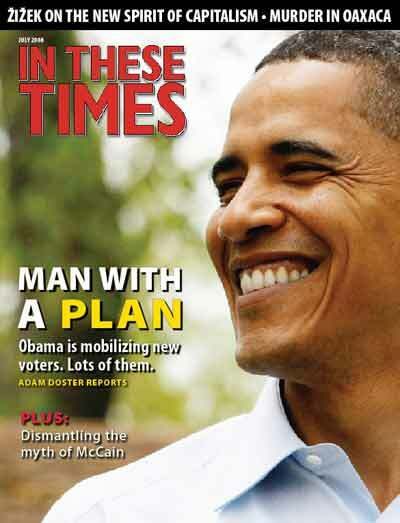What role has sexism played in the race for the Democratic nomination? Hillary Clinton answered that seething question herself in late May, telling the Washington Post that the press turned a blind eye to the “incredible vitriol that has been engendered … by people who are nothing but misogynists.” Her most avid supporters are clearly aggrieved by what they see as anti-woman sentiment in the media.
Then there’s the pointless debate about what’s more permissible, racism or sexism? How do we imagine, say, Michelle Obama might answer that? She stands at the intersection of both streams of prejudice.
These false oppositions – about whether the treatment of Clinton has been sexist, or if sexism is more acceptable than racism – miss the point.
So much is in flux in this campaign: who’s voting for whom (e.g., white women in Indiana for Clinton – and Obama), the heightened prominence of women and blacks as candidates and voting blocs, and evolving standards for assessing candidates in a country with a press still trapped in superficial “gotcha!” journalism.
The news media – part of a larger industry that gives us no-nonsense women surgeons, police lieutenants and law partners in TV dramas on the one hand, and “The Bachelor” on the other – oscillates wildly between its commitment to equality and its continued, though unconscious institutional sexism and racism.
Women are held up simultaneously to feminist and feminine standards, and must fulfill both, but with a bias (still) toward the feminine. The ideal seems to be the Steel Magnolia.
Sen. Clinton has been treated like most male candidates, questioned about her policies, attacked for gaffes and inflammatory remarks. Yet the press has also persisted – despite the countless times feminists have denounced this routine – in emphasizing her physical appearance to an extent rarely done with male candidates.
The feminine-feminist schizophrenic playbook has also been closely followed for two women who couldn’t be more different: Cindy McCain and Michelle Obama.
In February, both commanded the national spotlight. On Feb. 21, as reported in the New York Daily News, a “slender” Cindy McCain, “the striking blond” and “perky stay-at-home mom” “stood by her man” to defend her husband against charges printed in the New York Times that he had had an improper relationship with “an attractive female lobbyist.” Or, as the Washington Post stated, she stood by “her husband’s side, all jewel-toned clothing and icy blue eyes.”
Yet in an April USA Today feature, we learned that this “elegant blonde in jewel-toned suits and a quadruple strand of pearls … travels to poor countries on medical missions” and “chairs a huge beer distribution company.” Say what?
The same woman that CNN’s Carol Costello and various bloggers have ridiculed as a “Stepford wife,” has also been, since 2000, chairman of Hensley & Co., her father’s $300 million Anheuser-Busch distribution company, and serves on the boards of three charitable organizations dedicated to children. Stay-at-home mom?
USA Today also reported that when her husband’s campaign nearly crashed, “She had a pretty strong hand in righting the campaign.” So, Cindy McCain has been dismissed as a blonde bimbo clotheshorse, and as the money and power behind her husband’s success.
That same week, Michelle Obama appeared on the cover of Newsweek in a simple, sleeveless, pale blue satin sheath, a string of pearls, and a simple bouffant hair-do, immediately prompting analogies to Jacqueline Kennedy. The headline read “He Calls Her His ‘Rock.’ ” Inside we learned she’s “steely.” In her account of her interview with Michelle, CNN’s Soledad O’Brien emphasized her “perfect make-up” and “fabulous patent-leather boots.”
Yet Mrs. Obama faces continuing denunciations for saying, “For the first time in my adult life, I am really proud of my country.” Right-wing pundits consistently cast her as negative, unpatriotic and as hating America. So, Mrs. Obama is a stylish Benedict Arnold.
The question isn’t whether the media have been sexist. Of course they have. The issue for women – be they candidates or spouses – is how our culture’s ongoing and conflicted attitudes toward femininity (too much is too retro and weak) versus feminism (too assertive and strident) leaves most public women no place to stand.
When race is thrown into the mix, however veiled, as it will be with Mrs. Obama, we can only imagine what contortions she’ll be put through.
Susan J. Douglas is a professor of communications at the University of Michigan and a senior editor at In These Times. She is the author of In Our Prime: How Older Women Are Reinventing the Road Ahead.









